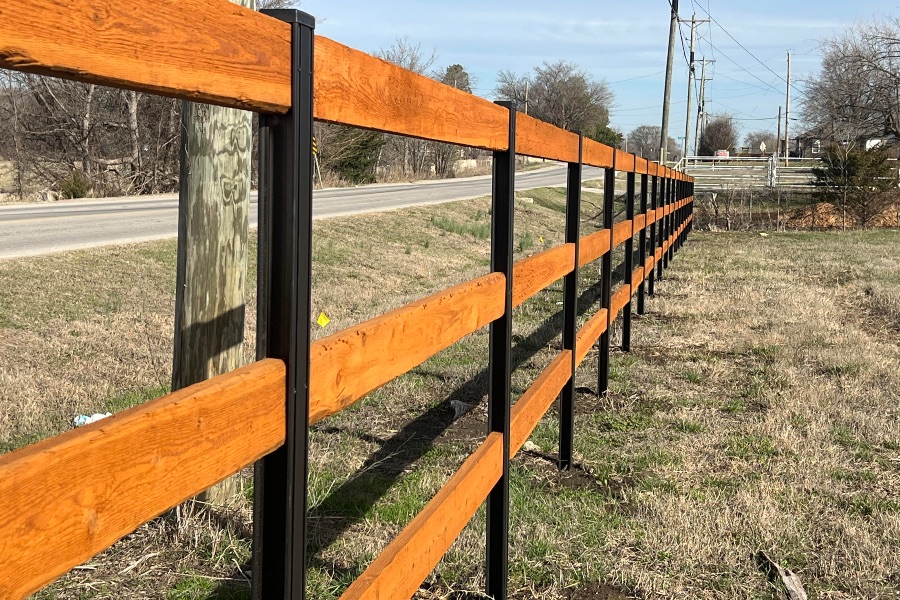All Categories
Featured

Fences are a vital part of your residential or commercial property, providing privacy, safety and security, and aesthetic worth. However, they are continuously revealed to the components and can deal with weather-related damages with time. Whether it's solid winds, rain, snow, or extreme warmth, climate condition can slowly deteriorate your fence, resulting in expensive repair services or substitute. Fortunately, there are numerous steps you can take to protect your fencing from weather-related damage and extend its life-span. Here's how you can guard your fencing against the elements.
- Pick the Right Material. The sort of product your fence is made from plays a substantial duty in how well it will certainly stand up to weather. Some materials are normally more resistant to damage than others. :
Wooden Fences: While stunning and classic, wood can be prone to moisture, rot, and bugs. Pressure-treated wood or cedar can provide much better resistance to these issues. Plastic Fencings: Plastic is very resistant to moisture, rot, and parasites. It also stands well to harsh sunlight and heavy rain. Metal Fencings: Wrought iron or light weight aluminum fencings are resilient and can stand up to a range of weather condition problems. They can, however, deal with corrosion in time, particularly if not appropriately covered. Composite Fences: Made from a mixture of timber fibers and plastic, composite fences are more resistant to weather-related damages contrasted to traditional wood fences. Selecting the ideal product for your region's climate is the primary step in securing your fencing from weather condition damages.
- Seal or Discoloration Wooden Fences. Wood fences are particularly at risk to harm from moisture, UV rays, and temperature level fluctuations. Among the most reliable methods to secure your timber fence is by applying a safety sealer or stain. These products assist:
Stop Water Damages: Sealers create a waterproof obstacle, stopping dampness from leaking right into the wood and creating mold and mildew, rot, or mold. Shield Against UV Damage: A good discolor or sealant will certainly also obstruct damaging UV rays from the sunlight, which can trigger timber to dry out, fracture, and tarnish over time. Maintain the Fence's Look: Routine staining assists preserve the natural appeal of the timber and prolongs its lifespan. It's suggested to reapply the discolor or sealant every 1-- 2 years to keep your fencing in great condition.
- Mount an Obstacle for Wind Security. Strong winds can trigger substantial damages to your fence, specifically if it is weak or tall. Wind can bend or break wood panels, loosen fencing posts, or even trigger the entire fence to collapse. Installing a windbreak-- such as growing hedges, hedges, or setting up a mesh obstacle-- can aid safeguard your fence from high winds.
Furthermore, you can enhance the articles with concrete or steel braces to offer extra stability and avoid shifting or leaning.
- Trim Overhanging Branches. Falling branches can damage panels or damage the fence messages, leading to pricey repairs. Maintaining the branches cut back minimizes the risk of branches breaking off and creating damage to the fencing.
- Normal Inspections and Upkeep. Carrying out normal maintenance and assessments is essential to capturing potential problems prior to they escalate. After a heavy storm, inspect your fence for any type of signs of damages, such as loose panels, leaning blog posts, or busted sections. Taking treatment of little problems before they become larger ones can help prolong the life of your fencing.
Additionally, cleaning your fencing periodically to remove dirt, mold, or debris can help maintain its appearance and stability. For wooden fences, gently pressure wash the surface area to eliminate built-up gunk, and for vinyl fences, make use of a mild cleaning agent to clean any type of spots.

- Make Certain Correct Water Drainage. Water damages is among the most typical weather-related problems that affect fences. Poor drainage can bring about standing water around your fencing messages, which can cause the articles to rot or deteriorate over time. To stop this, see to it the ground around your fence inclines away from the blog posts. You may additionally intend to install drainage services such as French drains pipes or gravel at the base of the blog posts to avoid water from merging.
- Use a Safety Layer to Metal Fencings. Metal fences, such as those made from iron or steel, are extremely durable yet can be susceptible to corrosion if not correctly maintained. Using a safety finishing or paint that is specifically developed for steel can aid protect against rust and deterioration. Be sure to inspect the fencing occasionally for any type of indicators of rust, and address it right away by fining sand and painting the affected locations.

Final thought. Your fencing is a valuable investment, and shielding it from weather-related damages will assist ensure that it remains to serve its objective for years to find. By selecting the appropriate products, routinely preserving your fencing, and taking steps to secure it from the elements, you can lessen weather-related damage and expand its life-span. Whether you're managing solid winds, heavy rainfall, or the severe sunlight, these easy actions can go a long means in protecting the condition and appearance of your fencing, saving you money and time in the future.
Latest Posts
Explore Montclare Auto Repair’s Premier Car Care Solutions and Why Drivers Choose Them
Published May 28, 25
1 min read
Explore Best Auto Repair Care in Chicago – Drive with Confidence
Published May 25, 25
1 min read
Reputable Industrial Roofing Services by Weathercraft
Published May 24, 25
1 min read
More
Latest Posts
Explore Montclare Auto Repair’s Premier Car Care Solutions and Why Drivers Choose Them
Published May 28, 25
1 min read
Explore Best Auto Repair Care in Chicago – Drive with Confidence
Published May 25, 25
1 min read
Reputable Industrial Roofing Services by Weathercraft
Published May 24, 25
1 min read